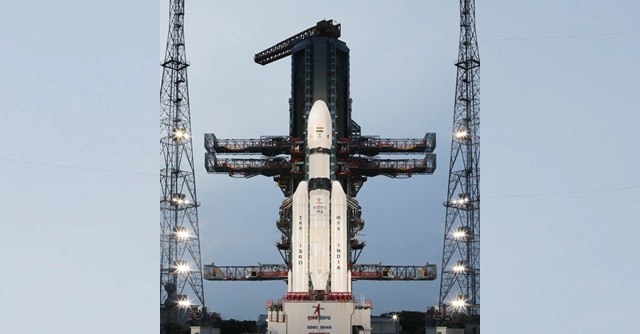
Isro successfully deploys Chandrayaan-3 in orbit


The Indian Space Research Organisation (Isro) on Friday successfully deployed Chandrayaan-3, India’s third and latest mission to the moon, in orbit. The mission comes four years after Isro’s second lunar mission, Chandrayaan-2, failed to conduct a soft landing on the moon—which thus is now the most important mission for Chandrayaan-3 to achieve.
Deployed aboard Isro’s heavy-configuration rocket, Launch Vehicle Mark (LVM)-3, Chandrayaan-3 took off from the central space agency’s Satish Dhawan Space Centre in Sriharikota, Andhra Pradesh at 2:30PM IST. It then successfully injected the Chandrayaan-3 orbiter module with its entire suite of payloads in orbit, which will now trace a trajectory to the moon.
A landmark soft landing attempt at the south pole of the lunar surface is scheduled to be attempted by Chandrayaan-3’s landing module on 23 August, subject to conditions. If executed successfully, India will become the first nation in the world to land at the south pole of the moon.

India will also become only the fourth nation in the world to land on the lunar surface, after the US, the erstwhile Soviet Union, and China. The latter so far is the only nation to have successfully landed a rover on the moon in its very first attempt.
Prime Minister Narendra Modi said upon the launch that the successful launch is “a testament to (India’s) scientists’ relentless dedication”.
“Chandrayaan-3 has started making its journey towards the moon, and will make orbit-raising maneuvers in its journey to the moon in the coming days,” confirmed Isro chief S Somanath, shortly after the successful deployment in orbit.

The three mission objectives, according to Isro, include the soft-landing of the mission’s rover on the south pole of the lunar surface, demonstrating the rover’s capability of traversing lunar surfaces, and conducting scientific experiments that include studying lunar ice formations within craters. Chandrayaan-3, as per Isro statements, could become the first to collect lunar ice samples.
The main propulsion module of Chandrayaan-3 includes a payload called Spectro-polarimetry of HAbitable Planet Earth (SHAPE)—according to Isro, the payload will collect spectral and polarimetric data of Earth from the moon, in order for India to better study faraway exoplanets and detect properties that may exhibit signs of life.
The lander module’s payloads include Radio Anatomy of Moon Bound Hypersensitive ionosphere and Atmosphere (RAMBHA), which will study plasma formations near the lunar surface to analyse lunar atmosphere conditions. Others include Chandra’s Surface Thermo physical Experiment (ChaSTE), Instrument for Lunar Seismic Activity (ILSA) and LASER Retroreflector Array (LRA), while the rover module’s payloads include LASER Induced Breakdown Spectroscope (LIBS) and Alpha Particle X-ray Spectrometer (APXS).

The entire array of scientific payloads will contribute to photo-chemical scientific observations and experiments on the lunar surface.
Chandrayaan-3 was developed by Isro at a cost of ₹615 crore, and will seek to put India on the roadmap of countries seeking to grab a piece of the lunar race.
